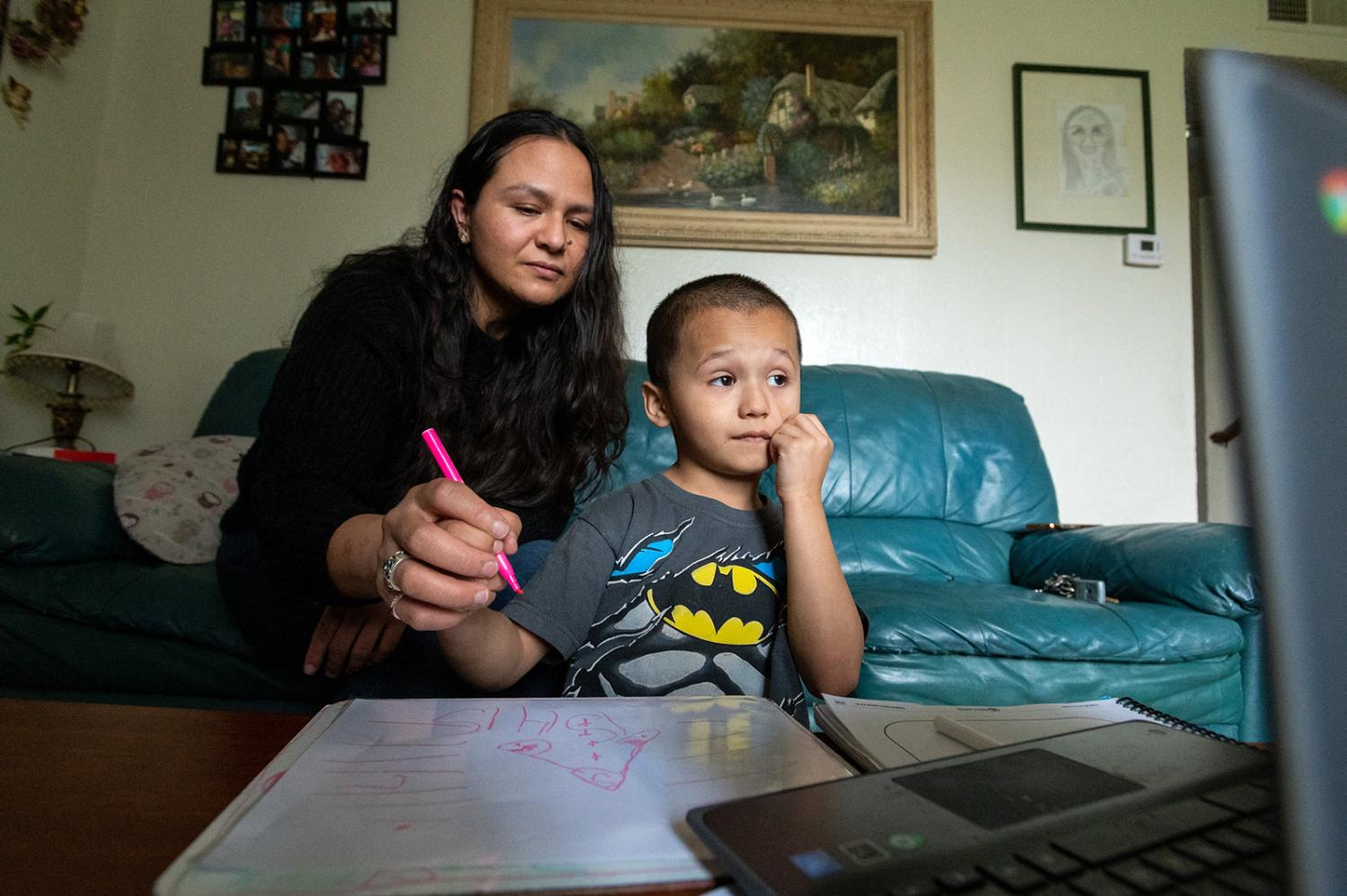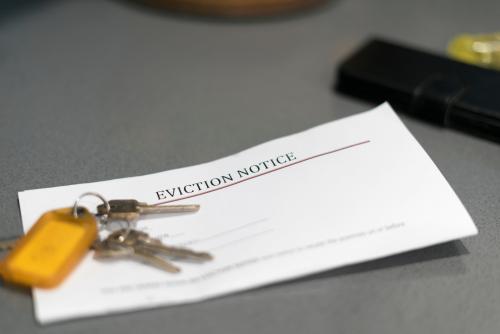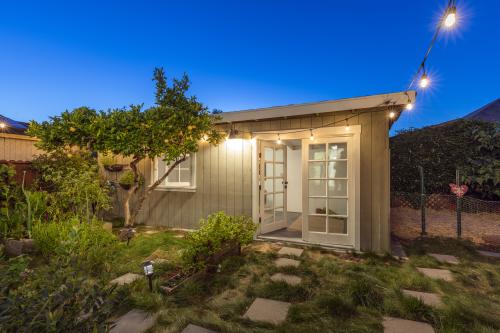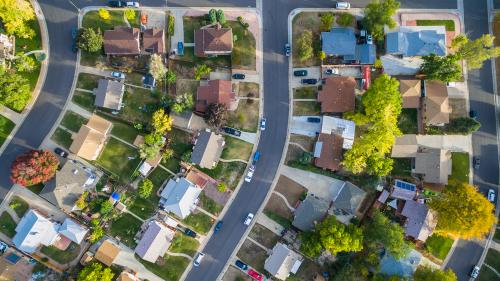This report was developed for our partners at Brookings Mountain West; the original version was published on their site on March 22, 2021.
Contents
- Housing distress lasted well beyond the end of the Great Recession
- Homeowners and renters experienced recession and recovery differently
- Crowding is concentrated among Latino or Hispanic households in California
- Racial disparities in homeownership persist over time
- In housing, history doesn’t repeat itself, but it often rhymes
It is difficult to overstate the extent to which the COVID-19 pandemic has wreaked havoc on housing markets. Millions of renters have fallen behind on their rent, fearing eviction while accumulating debts they cannot pay. Missed payments are putting pressure on the nation’s already fragile affordable housing supply. And prices for owner-occupied housing have soared while the inventory of for-sale homes has plummeted. These disparate outcomes in housing market segments mirror the pandemic’s uneven impact on labor markets, with college-educated professionals working from home while low-wage service workers experience the highest rates of job loss.
In some ways, the current economic situation is the inverse of the Great Recession. In that crisis, foreclosures and collapsing prices hit homeowners first, before the recession spread into rental markets. Despite this difference, the Great Recession and recovery from it can offer some context and insights into how households and housing markets might fare as the U.S. economy recovers from COVID-19.
In this brief, we analyze several measures of housing distress from 2007 to 2019 for six metro areas, chosen based on their housing and labor market characteristics. Los Angeles, Riverside, Calif., Las Vegas, and Phoenix were among the areas foreclosures hit hardest. Job markets in Las Vegas, Orlando, Fla., and New Orleans depend heavily on tourism and hospitality industries, which are disproportionately suffering in the public health emergency. How housing markets in these metro areas recovered from the Great Recession offers some guidance for what to expect over the next few years.
Housing distress lasted well beyond the end of the Great Recession
The Great Recession lasted from December 2007 through June 2009. But two key metrics—housing prices and homeownership rates—show that housing markets continued to worsen for several years.
Homeownership rates reached historic heights during the housing boom of the early and mid-2000s, fueled in part by widespread expansion of mortgage availability and loosened underwriting criteria. The foreclosure crisis that triggered the Great Recession caused homeownership rates to decline sharply in all six metro areas in this analysis, generally hitting a trough around 2014—nearly five years after the recession officially “ended” (Figure 1). Most metro areas (except Los Angeles) have seen homeownership rebound by several percentage points from the lowest point, although not all have returned to their pre-Great Recession peaks.

Housing prices show a similar pattern. Prices dropped steeply during the Great Recession, followed by several years of gradual declines (Figure 2). While the timing of the decline and rebound varies some across the six metro areas, most areas did not see a noticeable recovery of prices until 2013.

Homeowners and renters experienced recession and recovery differently
While housing prices and homeownership rates are some of the most frequently used metrics to describe the aggregate health of housing markets, they do not provide direct insight into household-level well-being. To assess the level of financial stress owner and renter households experienced during the Great Recession and its recovery, we look at housing cost burdens: the share of monthly income spent on housing costs. The Department of Housing and Urban Development recommends that households spend no more than 30% of their income on housing; higher cost burdens may lead households to cut back on food, transportation, or other necessities.
Homeowner cost burdens in most metro areas declined steadily during the Great Recession and recovery (left panel of Figure 3). The decline in homeowner cost burdens reflects two underlying trends. First, financially vulnerable homeowners were more likely to lose their homes to foreclosure, so the remaining group of homeowners became more affluent through selection. Second, both housing prices and mortgage interest rates declined during this period, making homeownership effectively cheaper.
Renters faced very different conditions. From 2007 to about 2011, renter cost burdens increased before starting to decline (right panel). As distressed homeowners moved out of their homes following foreclosure, they entered the rental market, putting additional pressure on rents.

One limitation to comparing cost burdens between all homeowners and all renters is that homeowners, on average, have higher incomes than renters. And during this period, the foreclosure crisis played a large role in shifting the income composition of the two groups.
To compare changes over time in the relative costs of owning versus renting for households of similar income, we calculate the ratio between renter and owner cost burdens within a particular income band, metro area, and year. To illustrate, in 2009, middle-income renters (households in the third income quintile) in the Las Vegas metro area spent 25% of their monthly income on rent. Middle-income homeowners spent 33% of their income on housing. The ratio of these two numbers is 0.76 (renters had smaller cost burdens than homeowners of similar income). In 2019, middle-income renters spent on average 23% of their income on rent, while middle-income homeowners had cost burdens of 20%, for a ratio of 1.12. So, between 2009 and 2019, renting became relatively more expensive for middle-income households in Las Vegas.
Graphing the ratio of renter-to-homeowner cost burdens (Figure 4) shows that renting became relatively more expensive for middle-income households in all six metro areas. (This graph shows ratios for households in the three middle-income quintiles; a large majority of households in the highest income quintile are homeowners, with most households in the lowest quintile renting.)
From 2007 to 2011, five of the six metro areas had cost burden ratios below 1.0, meaning that middle-income renters spent a lower share of their income on housing than similarly affluent homeowners. However, the cost burden ratios increased over time in all metro areas, so that by 2013, all except Los Angeles had ratios above 1.0. The last two years of the graph show a sharp uptick in costs for five of the six metro areas, illustrating the growing affordability pressures for renters across much of the U.S.

The rising relative cost of renting reflects several underlying trends in both the rental and owner-occupied markets following the Great Recession. On the homeownership side, declining housing prices combined with falling interest rates made owning cheaper for the lucky households who had not entered foreclosure. Households who were able to purchase their first home benefitted from both lower prices and cheaper capital, while many existing homeowners refinanced their mortgages to take advantage of lower rates. At the same time, rent levels rose in most metro areas due to increased demand. The Los Angeles metro area also suffers from highly restrictive land use regulations that constrain the development of multifamily housing.
Crowding is concentrated among Latino or Hispanic households in California
The COVID-19 pandemic has drawn renewed attention to another metric of housing distress: crowded homes (those with more than two people per bedroom). Even without the health risks created by a global pandemic, living in overcrowded homes can harm people’s mental and physical well-being. While crowding is a relatively scarce problem nationally, it is more prevalent in high-cost areas and among immigrant populations. Doubling-up with multiple households is one way that low-wage workers can bring down per-person housing costs. People who undergo evictions, foreclosures, or other types of displacement often move in with family or friends, at least temporarily. Therefore, we would expect to see crowding increase during times of widespread financial hardship and/or rising housing costs.
Among the six metro areas studied, Los Angeles had by far the worst levels of crowding as well as the highest housing costs. Between 6% and 8% of households in Los Angeles had more than two people per bedroom between 2007 and 2019. Riverside (the next most expensive metro area) had crowding rates about half those in LA, while the remaining metro areas were under 2%. Crowding increased noticeably in both Los Angeles and Riverside during the early years of the Great Recession, before returning to earlier levels. The other metro areas don’t show clear time trends in crowding over this period.

Focusing on the two metro areas which saw increased crowding during the Great Recession, we find that Latino or Hispanic households experienced the highest rates of crowding, followed by Black households (Figure 6). Crowding increased among both groups after 2007, before declining during the recovery. Other analysis finds higher rates of crowding among renters and low-income households.

Racial disparities in homeownership persist over time
Decades of discrimination in housing, credit, and labor markets have limited Black and Latino or Hispanic families’ access to homeownership, creating large and durable disparities in homeownership rates. The gap between Black and white homeownership rates ranges from 20 to 40 percentage points, while the gap between Latino or Hispanic and white rates ranges between 10 and 30 percentage points (Figure 7). The size of the gaps varies across metro areas, but within metro areas, patterns are remarkably persistent over time.

In housing, history doesn’t repeat itself, but it often rhymes
What insights do these past events offer into how housing markets will react to the COVID-19 pandemic? With the caveat that no two recessions are exactly the same, four lessons seem likely to apply:
- Distressed properties and indebted households can slow economic recovery. The foreclosure process can take years to resolve, tying up homes in legal and financial limbo. People with large amounts of debt—whether they are homeowners, renters, or landlords—aren’t in a position to spend at local businesses and shops.
- Watch for problems crossing over housing market segments. Households that lost their homes to foreclosure contributed to upward pressure on rents, making life harder for existing renters. Today’s renters would normally be tomorrow’s first-time homebuyers—but not with a pile of rent debt and an eviction on their record.
- Overcrowded homes increase future health risks. COVID-19 may be the worst public health crisis since the Spanish flu, but it’s unlikely to be the last (especially given climate change). Taking steps now to help low- and moderate-income renters afford sufficient space in decent-quality homes is an investment in everyone’s future health.
- Racial disparities in housing won’t solve themselves. More than 50 years after the Fair Housing Act passed, Black and Latino or Hispanic families still face substantial barriers to homeownership. Both the Great Recession and the COVID-19 pandemic have disproportionately harmed Black and brown communities. Intentional, sustained policy intervention to close the racial wealth gap is long overdue.








